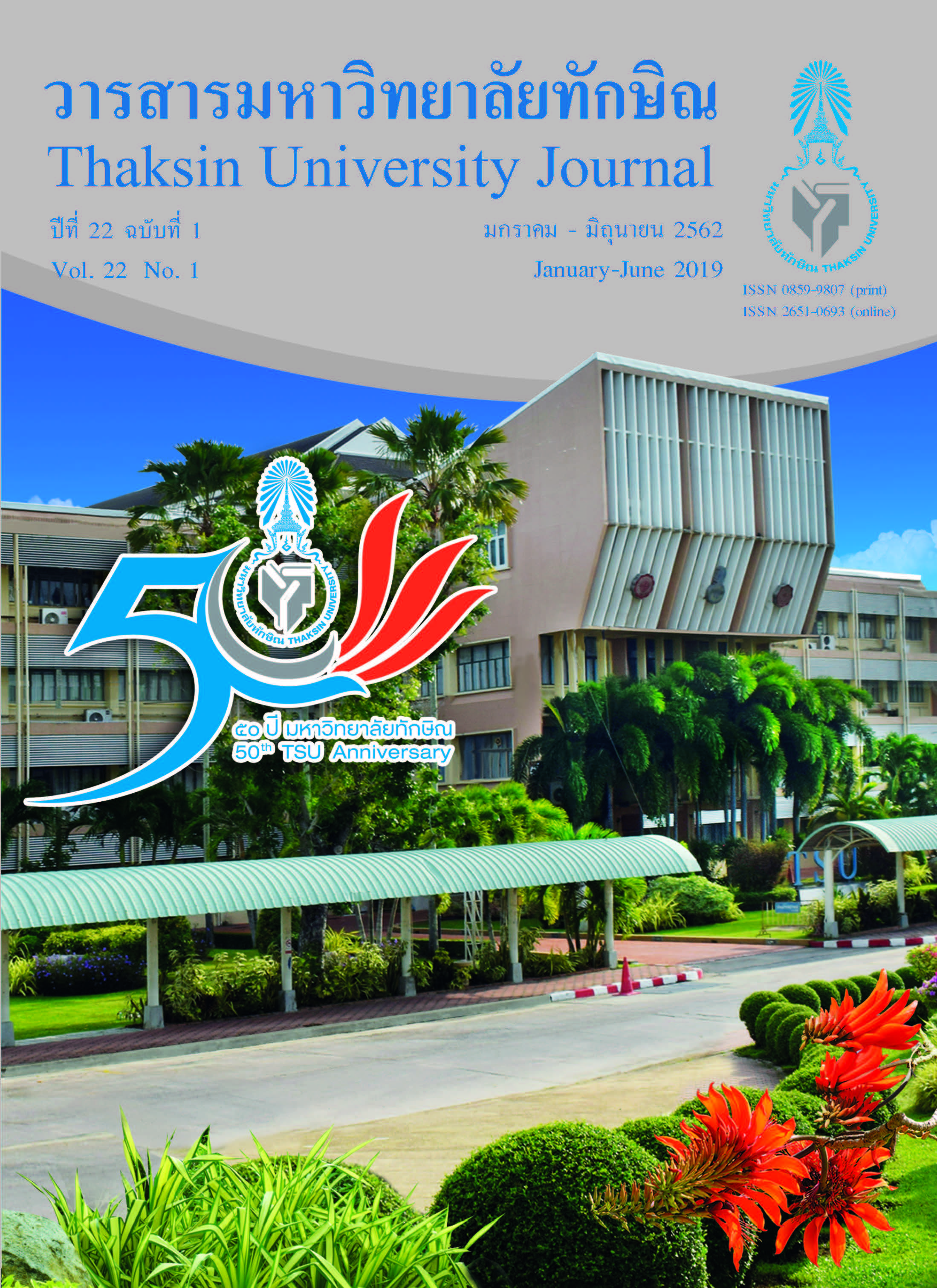Effects of a New Exercise Model Integrated with Mae Bot Yai Thai Dance on Balance Control in Thai Community-dwelling Older Adults: Participatory Action Research
Main Article Content
Abstract
This study was managed as a participatory action research proposed to develop a new exercise model integrated with Mae Bot Yai Thai dance to control balance for seniors in communities, to evaluate the efficacy of the new exercise and to promote sustainable health development. The preparation of communities and the development of Mae Bot exercise were performed with participations of community members in the first stage. A cluster randomized controlled trial was used to separate participants with age sixty and older into two groups of an experimental group (E group) and a control group (C group). In both groups, three balance tests were used to measure participants’ balance control four times at the same time points. Mae Bot exercise was applied continuously in E group for twelve weeks, whereas no intervention was done in C group. The results revealed that there were significant improvement of all variables in E group both within group and compared with C group. It found that the experiment group had a significant increase of capacity of balance control both from comparison within and between groups. It indicated that Mae Bot exercise was effectively developed and could encourage sustainable health development through participatory process of community throughout the process.
Article Details

This work is licensed under a Creative Commons Attribution-NonCommercial-NoDerivatives 4.0 International License.
References
[2] Finlayson, M.L., & Peterson, E. W. (2010). Falls, Aging, and Disability. Physical Medicine and Rehabilitation Clinic of North America, 21, 357-373.
[3] Sherrington, C., Whitney, J. C., Lord, S. R., Herbert, R. D., Cumming, R. G., & Close, J. C. (2008). Effective Exercise for the Prevention of Falls: A Systematic Review and Meta-Analysis. Journal American Geriatrics Society, 56, 2234-2243.
[4] Ontario Learning for Sustainability Partnership (OLSP). (1996). Learning for Sustainability: Essential Outcomes and Classroom Learning Strategies, Toronto: OLSP.
[5] Hui, E., Chui, T-K. B., & Woo, J. (2009). Effects of Dance on Physical and Psychological Well-Being in Older Persons. Archives of Gerontology and Geriatrics, 49, e45-e50.
[6] Roberson, D.N., Wang, S. Y., Sigmund, E., & Valkova, H. (2015). The Influence of a Ten Week Tai Chi Program with Seniors. Acta Gymnica, 45, 77–84.
[7] Laophosri, M., Kanpittaya, J., Sawanyawisuth, K., Auvichayapat, P., & Janyacharoen, T. (2013). Effects of Thai Dance on Balance in Thai Elderly. Chulalongkorn Medical Journal, 57, 345-357.
[8] Cultural heritage of the nation. (2014). Rum Mae Bot. Bangkok: Department of Cultural Promotion, Ministry of Culture.
[9] Plowman, S. A., & Smith, D. L. (2011). Neuromuscular-Skeletal System. (In Plowman, S.A. and Smith, D.L.eds.). Exercise Physiology: For Health, Fitness and Performance (3rdedition). 483-616. Baltimore: Lippincott Williams & Wilkins.
[10] Rikli, R., & Jones, J. (2001). Senior Fitness Test Manual. Champaign: Human Kinetics.
[11] Duncan, P. W., Studenski, S., & Chandler, J. (1992). Functional Reach: Predictive Validity in a Sample of Elderly Male Veterans. Journal of Gerontology, 47, M93-98.
[12] Bohannon, R. W. (2006). Single Limb Stance Times: A Descriptive Meta-Analysis of Data from Individuals at Least 60 Years of Age. Geriatric Rehabilitation, 22, 70-77.

